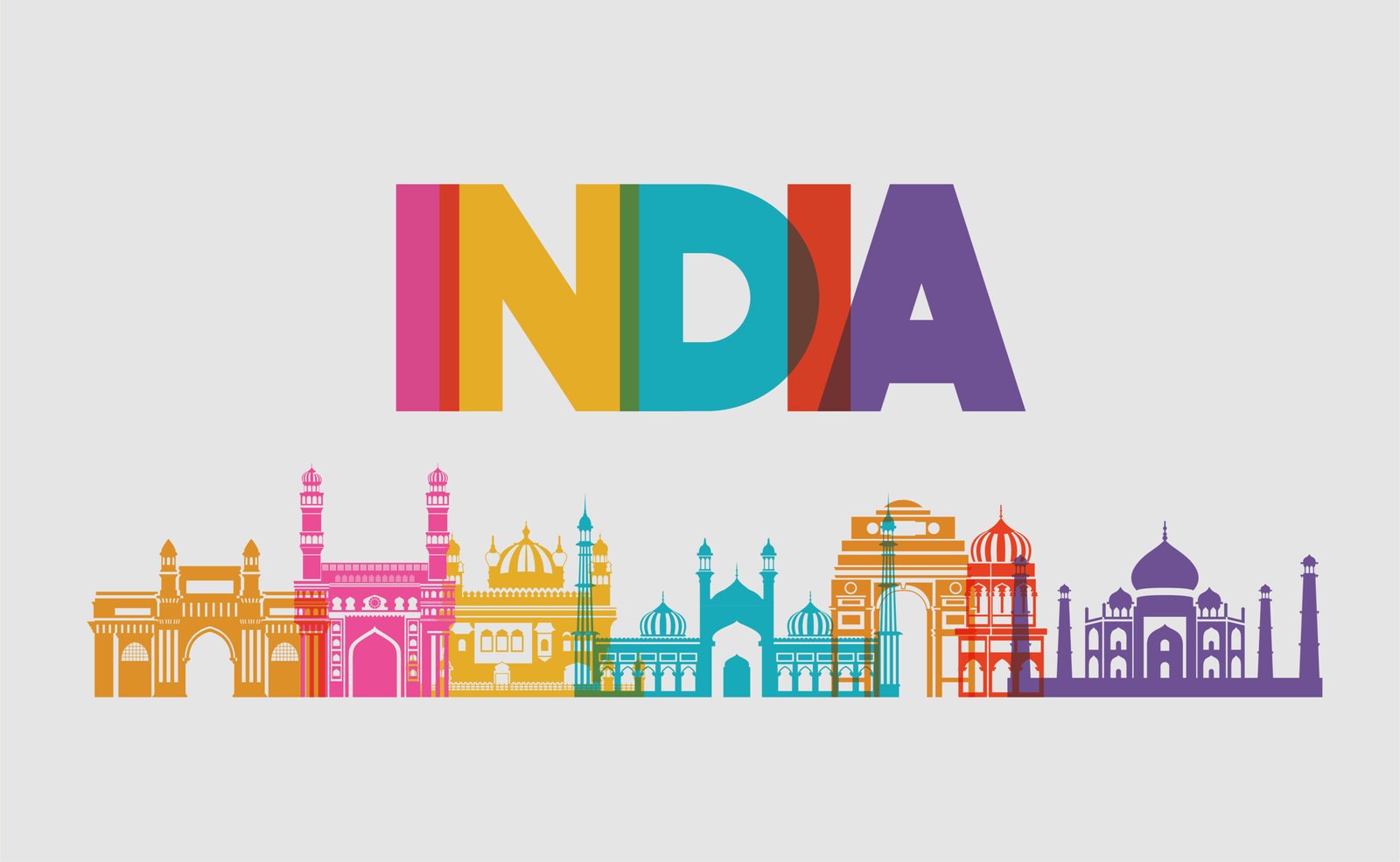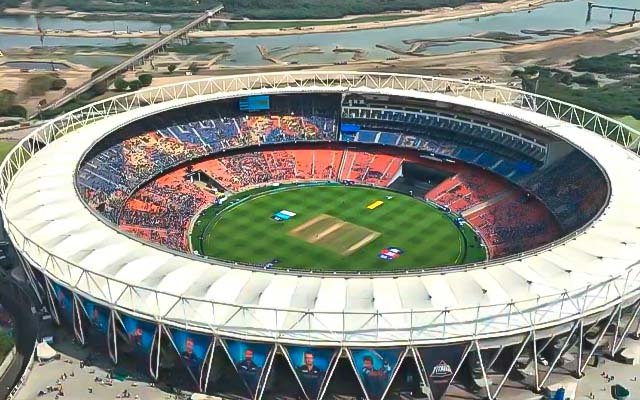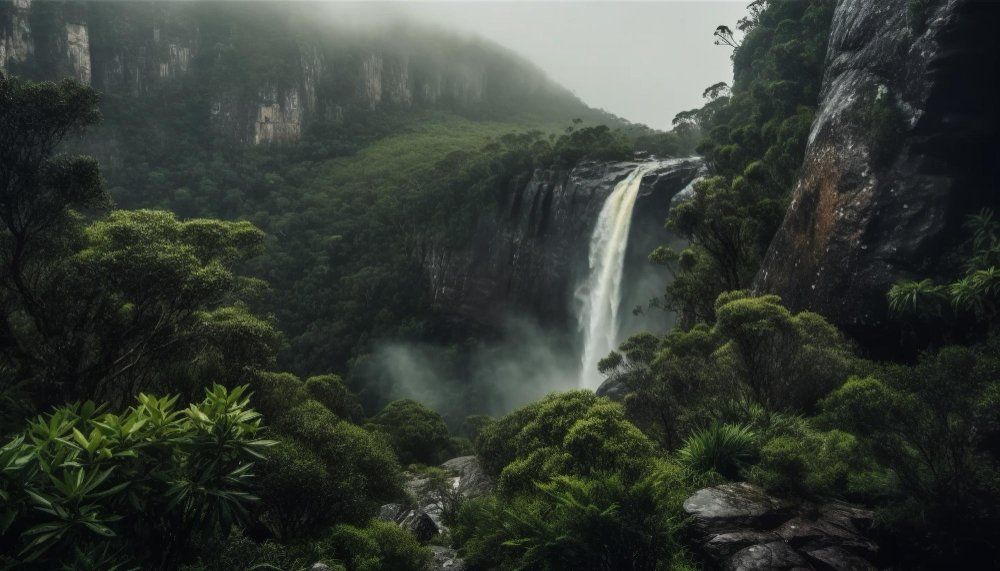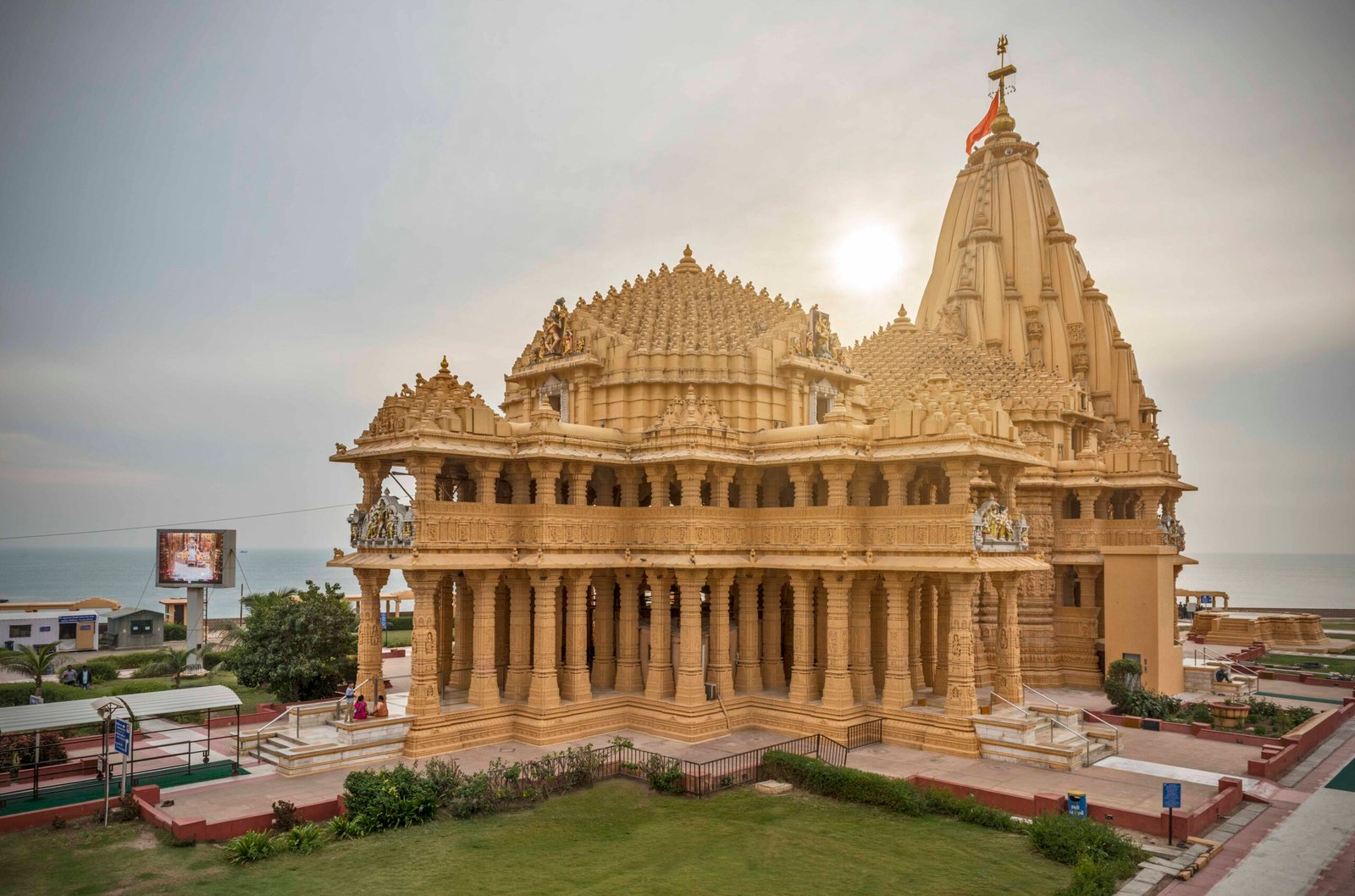India Geography
● India is the 7th largest country in the world with an area of 3287263 sq km, which is 2.42% of world’s area.
● India is the second most populous country in the world with a population of 1.21billion (2011), which is 17.44% of the world’s population.
● Indian sub-continent is located in the Northern and Eastern hemisphere.
● India shares longest boundary with Bangladesh (4096 km), followed by China (3488km), Pakistan (3323 km), Nepal (1751 km), Myanmar (1643 km), Bhutan (699 km) and Afghanistan (106 km).
● In India, the Tropic of Cancer (23.5°N latitude) passes through 8 States (Gujarat,Rajasthan, Madhya Pradesh, Chhattisgarh, Jharkhand, West Bengal, Tripura andMizoram).
● Islands Andaman and Nicobar Island group in the Bay of Bengal; Lakshadweep,island group in the Arabian Sea.
● Indian Standard Time (IST) The 82°30’ E longitude is taken as the Standard
Meridian of India, as it passes through middle of India (from Naini, near Allahabad).
● The 82° 30’ E Meridian also decides the time in Sri Lanka and Nepal.
● On the South-East, the Gulf of Mannar and the Palk Strait separates India from Sri
Lanka.
INDIA : BASIC INFORMATION
n Latitudinal extent 8°4’ North to 37° 6’ North
n Longitudinal extent 68°7’ East to 97° 25’ East
n North-South extent 3214 km
n East-West extent 2933 km
n Land Frontiers 15200 km
n Total Coastline 7516.6 km
n Number of States 28
n Number of Union Territories 8
n Land Neighbours (7) Pakistan, Afghanistan, China, Nepal,
Bhutan, Bangladesh and Myanmar
n States with Longest Coastline Gujarat
n Active Volcano Barren Island in Andaman and Nicobar Islands
n Southern most point Indira Point or Pygmalion point in Great Nicobar
n Southern most tip of mainland Kanyakumari
n Northern most point Indira Col
n Western most point West of Guhar Mota in Gujarat
n Eastern most point Kibithu in Arunachal Pradesh
Indian States Situated on the Border
Country Indian States Sharing their Borders
Pakistan (5) Gujarat, Rajasthan, Punjab, Ladakh and Jammu and Kashmir
Afghanistan (1) Ladakh
China (5) Ladakh, Uttarakhand, Himachal Pradesh, Sikkim and Arunachal Pradesh
Nepal (5) Uttar Pradesh, Uttarakhand, Bihar, West Bengal, Sikkim
Bhutan (4) Sikkim, West Bengal, Assam and Arunachal Pradesh
Bangladesh (5) West Bengal, Assam, Meghalaya, Tripura and Mizoram
Physiographic divisions of India are as follows:
● The Himalayan Range of Mountains
● The Peninsular Plateau
● The Great Plains of India
● The Coastal Plains
● The Islands of India
The Himalayas
● Himalayas means ‘Abode of snow’. These
are young fold mountains of tertiary period,
which were folded over Tethys sea due to
inter-continental collision.
● They are one of the youngest fold mountain
ranges in the world and comprises mainly
sedimentary rocks.
● They stretch from the Indus river in
the West to the Brahmaputra river in
the East.
● The Pamirs, popularly known as the
Roof of the World is the connecting
link between the Himalayas and the
high ranges of Central Asia.
● The total length is about 2500 km
with varying width of 240 to 400 km
and a total area of 595000 km2
.
They consists of three parallel ranges
such as:
(i) Himadri (Greater Himalayas)
(ii) Himachal (Lesser Himalayas)
(iii) Shiwaliks (Outer Himalayas)
Greater Himalaya (Himadri)
● Northern most part of the Himalayan
range, it is one of the world’s highest
regions with an average altitude of 6100
m above sea level.
● It includes world’s highest peak, Mt
Everest (8848 m) located in Nepal. It is
known as Sagarmatha in Nepal and
Chomolungma in China.
● Zaskar range is situated on the Western
part of Greater Himalayas. It includes
Nanga Parbat (8126 m) in Kashmir-
Himachal region) and Dhaulagiri
(8172 m) in Nepal.
Other Important Peaks
● Kanchenjunga (8598 m, Sikkim)
Makalu (8481 m, Nepal), Mansalu
(8156 m, Nepal), Nanga Parbat (8108
m, Gilgit Baltistan), Kamet (7756 m,
Uttarakhand) and Nanda Devi (7816 m,
Uttarakhand).
Important Passes in Greater
Himalaya
Pass Location Connectivity
Karakoram
Pass
Ladakh India to China
Burzil Pass PoK Kashmir valley
to Gilgit
Zojila Pass Ladakh Srinagar to
Leh
Shipki la Pass Himachal
Pradesh
Shimla to
Gartok (Tibet)
Jelep la Pass Sikkim Sikkim to
Lhasa (Tibet)
Yangyap Pass Arunachal
Pradesh
Entry of
Brahmaputra
river
Middle Himalaya or Lesser
Himalaya (Himachal)
● From West to East middle Himalaya is
divided into following ranges:
¡ Pirpanjal range (Jammu and
Kashmir). It is longest range of the
middle Himalaya
¡ Dhauladhar range (Himachal Pradesh)
¡ Mussoorie range (Uttarakhand)
¡ Nagtibba range (Uttarakhand)
¡ Mahabharat range (Nepal)
Important Passes in
Middle Himalaya
Pass Location Connectivity
Pirpanjal
Pass
Jammu and
Kashmir
Jammu-Srinagar road
passes from this
pass
Banihal
Pass
Jammu and
Kashmir
Jammu-Srinagar
NH-44 passes from
this pass. Jawahar
tunnel (India’s
longest road tunnel)
Rohtang
Pass
Himachal
Pradesh
Kullu valley with
Lahaul and Spiti
valley in Himachal
Pradesh
● Average altitude of the Middle Himalaya
is 3700-4500 km.
● Important hill resorts are Shimla,
Ranikhet, Almora, Nainital and Darjeeling.
Outer Himalayas (Shiwalik)
● These are the Southern most Himalayan
mountain range.
● Their average altitude varies from 600 to
1500 metres.
● They are known as Jammu hills in
Jammu and Dafla, Miri, Abor, Mishmi
hills in Arunachal Pradesh.
● They are the youngest part of Himalayas.
● They form the foothills of Himalayas.
Trans Himalayan Zones
● This zone lies to the North of the Great
Himalayas.
● Some important ranges of this zone are
Karakoram and Ladakh etc. The highest
peak in region is K2 or Godwin Austin or
Qagir (8611m, in Pak occupied
Kashmir). Mount K2 is also the 2nd
highest peak of the world and the highest
peak of India, located in Karakoram
range.
● Mt Rakaposhi is the highest peak in
Ladakh range and the steepest peak in
the world.
● Siachin glacier is second longest glacier
of the world outside the polar region
(75 km) and is located in Nubra valley.
Ladakh, Baltoro, Biafo, Batura, Hispar
are the other important glaciers in this
region.
Mountain Peaks : Quick Digest
Highest peak of India Mt K2 or Godwin
Austin (8611 m)
Highest peak of Satpura Dhupgarh
Highest peak of Aravalli Gurushikhar in Mount
Abu (1722 m)
Highest peak of Western
Ghat
Anaimudi (2695 m)
Highest peak of Eastern
Ghat
Mahendragiri
(1501 m)
Highest peak of Nilgiri Doda Beta (2637 m)
Highest peak of Naga hills Saramati (3826 m)
Highest peak of Andaman
and Nicobar
Saddle peak (731 m)
Himalayan Mountain Peaks
Peak Height (m) Country
Mt Everest 8848 Nepal-China
Mt K2 8611 PoK (India)
Kanchenjunga 8586 Nepal-India
Lhotse 8516 Nepal-China
Makalu 8481 Nepal-China
Cho oyu 8201 Nepal-China
Dhaulagiri 8172 Nepal
Manaslu 8163 Nepal
Nanga Parbat 8125 Pakistan
Annapurna 8091 Nepal
Gasherbrum I 8080 Pakistan-China
Broad peak 8051 Pakistan-China
Mountain Peaks in India
Highest Peak Height
(m)
State
Mt K2 8611 PoK (India)
Kanchenjunga 8586 Sikkim
Nanda Devi 7817 Uttarakhand
Saltoro 7742 Jammu and
Kashmir
Kangto 7090 Arunachal
Pradesh
Reo Purgil 6816 Himachal Pradesh
Saramati 3841 Nagaland
Sandakphu 3636 West Bengal
Khayang 3114 Manipur
Anaimudi 2695 Kerala
Doda Beta 2636 Tamil Nadu
The Great Plain
● To the South of the Himalayas and to
the North of the peninsula lies the
great plains of North India.
● It extends from West to East for 2400
km having an average width in
between 150-300 km.
● The plains are formed by depositional
works of three major river systems
Indus, Ganga and Brahmaputra.
● The vast plains of North India are
alluvial in nature and the Western
most portion is occupied by the desert.
● It is composed of Bhangar (old
alluvium), Khadar (new alluvium) in
the river bed, Bhabhar (plains
containing porous gravel and pebbles
where the streams disappear) and Terai
(damp, thick forest area, where Bhabhar
streams reappear).
Sub-Divisions of the Great Plain
The
Rajasthan
Plain
Thar or Great Indian desert is the
Western most region of the Great
Indian plain. A semi-arid plain,
lying to the East of Thar desert is
known as Rajasthan Bagar. The
Luni is the only South-West
flowing river of the region.
The
Punjab-
Haryana
Plain
It extends from Punjab in the
West to Yamuna (Haryana) in
East. They are composed of
Dhaya (Heavily gullied bluffs)
and Bets (Khadar Plains).
The
Ganga
Plain
It extends from Delhi to Kolkata
across the states of Uttar
Pradesh, Bihar and West Bengal.
The Ganga and its tributaries
deposit large amount of alluvium
and make this extensive plain
more fertile.
The
Brahma-
putra Plain
Low level plain formed by
Brahmaputra river system. It is
situated between Eastern
Himalaya in North and lower
Ganga plain and Indo-
Bangladesh border in the West.
● The Punjab – Haryana plain is drained
by five rivers and the intervening area
between the rivers is known as doab.
From South to North, doabs are as
follows:
Doab Region
Bist Doab Between Beas and Sutlej
Bari Doab Between Beas and Ravi
Rachna Doab Between Ravi and Chenab
Chaj Doab Between Chenab and
Jhelum
Sind Sagar Doab Between Jhelum, Chenab
and Indus
The Peninsular Plateau
● Rising from the height of 150m above
the river plains up to the average
elevation of 600-1000 m is the irregular
triangle known as the peninsular
plateau.
● It is composed of the old cystalline,
igneous and metamorphic rocks.
● It covers a total of 160000 km2 (about
half of total land area of the country).
● Narmada, which flows through a rift
valley divides the region into two parts:
the Central Highlands in the North and
the Deccan plateau in the South.
● The Deccan plateau is the largest plateau
in India.
Plateaus of Peninsular India
The Central Highland
● The Central Highlands lie to the North of
the Narmada river covering a major area
of the Malwa plateau.
● The Aravalis range is bounded by the
Central Highlands on the North-West
and Vindhyan range on the South.
● It is also known as Madhya Bharat
Pathar.
The Deccan Plateau
● The Deccan plateau is a triangular land
lying to the South of the river Narmada.
It is made up of lava flows in the
cretaceous era through the fissure
eruptions.
● It comprises Maharashtra plateau,
Karnataka plateau and the Telangana
and Rayalseema plateau (Andhra
Pradesh).
● The general slope is from West to East.
● The Eastern and Western Ghats
demarcate the Eastern and Western edges
of the Deccan plateau.
Meghalaya Plateau
● This plateau is separated from main
block of the peninsular plateau by a gap
called Garo-RajMahal gap.
● From East to West, the plateau comprises
Garo, Khasi, Jaintia and Mikir hills.
The Bundelkhand Upland
● It is located to the South of Yamuna river
between Madhya Bharat Pathar and the
Vindhyan Range. It is composed of
granites and gneiss.
The Marwar Upland
● It lies East of Aravali range. It is made up
of sandstone, shale and limestone of
Vindhyan period.
Chhotanagpur Plateau
● It covers mostly Jharkhand, Chhattisgarh
and Purulia region of West Bengal.
● It is composed mainly of Gondwana rocks
with patches of granites and gneisses and
Deccan lavas.
Hill Ranges of the Peninsula
Aravali Range
● Aravalis are one of the world’s oldest fold
mountains running in North-East to
South-East direction from Delhi to
Palanpur in Gujarat. It is an example of
relict mountain.
● It separates the fertile regions of Udaipur
and Jaipur regions from the semi-arid
regions of Rajasthan.
● Piplighat, Barr, Dewair and Desuri passes
allow movements by roads and railways.
Vindhyan Range
● This range acts as a water divide between
Ganga river system with the river system
of South India. The Maikal range forms a
connecting link between Vindhya and
Satpura.
Satpura Range
● It is a series of seven mountains running
in East-West direction South of Vindhya
and in between the Narmada and Tapi.
● It comprises Rajpipla hills, Mahadeo hills
and Maikal Range.
Eastern Ghats
● It comprises the discontinuous and
low hills that are highly eroded by
the rivers such as the Mahanadi,
the Godavari, the Krishna, the Cauveri
etc.
● Some of the important ranges include the
Javadi hills, the Velikonda range, the
Nallamalai hills, the Mahendragiri hills
etc.
Western Ghats
● Western ghats are locally known by
different names such as Sahyadri in
Maharashtra, Nilgiri hills in Karnataka
and Tamil Nadu and Anaimalai hills,
Cardamom hills in Kerala.
● It runs from the South of the valley of
river Tapi to Kanyakumari.
● The Sahyadris upto 16° North latitude
are mainly composed of basalt.
There are three important passes in the
Sahyadris
(i) Thalghat (between Mumbai and
Pune)
(ii) Palghat (between Palakkad and
Coimbatore)
(iii) Bhorghat (between Mumbai and
Nashik)
● The Eastern and the Western Ghats
meet each other at the Nilgiri hill.
Difference Between Eastern
Ghat and Western Ghat
Eastern Ghat Western Ghat
Located East of
Deccan Plateau.
Located West of
Deccan Plateau.
They are parallel of
Eastern Coast i.e.
Coromandel and
Northern Circar etc.
They are parallel to
Western Coast, i.e.
Konkan, Malabar etc.
Mahanadi, Cauveri,
Godavari, Krishna etc
rivers are drawn in this
region.
Narmada, Tapi,
Sabarmati and Mahi
etc rivers are drawn in
this region.
Mahendragiri with an
altitude of 1501 m is
the highest peak here.
Anaimudi with an
altitude of 2695 m is
the highest peak here.
The Coastal Plains
On the basis of location and active
geomorphological processes, it can be
broadly divided into
● Eastern coastal plain
● Western coastal plain
The Eastern Coastal Plain
● The East coastal plain extends from the
deltaic plains of the Ganga in the North
to Kanyakumari in the South for 1100
km with an average width of 120 km.
● Utkal plain extends from deltaic plains
of Ganga to the Mahanadi delta for
about 400 km.
● Andhra coastal plain extends from the
Southern limit of Utkal plains to Pulicat
lake (Andhra Pradesh). It has large
deltas of Krishna and the Godavari
rivers.
● Tamil Nadu plains extend from the
North of Chennai to Kanyakumari in
the South. Coromandel coast is a part
of this plain. It has the deltaic plains of
Cauveri and is popularly known as the
Granary of South India.
The Western Coastal Plain
It is about 1500 km long extending from
Surat to Kanyakumari.
These plains are sub-divided into six
Western Coastal Plain :
1. Kachchh Plains It is an arid and
semi arid region having salt deposits
Great Rann and Little Rann are
located within it.
2. Kathiawar Plains It extends from
Rann of Kuchchh to Daman in the
South.
3. Gujarat Plains Lies to the East of
Kachchh and Kathiawar, formed by
the rivers Narmada, Tapi, Mahi
and Sabarmati.
4. Konkan Plains It extends from
Daman to Goa for a distance of
about 500 km.
5. Karnataka Plains It extends from
Goa to Mangalore in a narrow belt.
6. Malabar or Kerala Plains It
extends between Mangalore and
Kanyakumari. The backwaters,
locally called kayals are the
shallow lagoons. The largest among
these is Vembanad Kayal followed
by Ashtamudi Kayal.
Difference Between Eastern
and Western Coast
Eastern Coast Western Coast
Smooth outline Dissected outline
Occurrence of
deltas
Occurrence of
estuaries
Less rainfall More rainfall
Broader Narrower
Long rivers Short rivers
Islands
● India has large number islands, most
of which are located in two groups
¡ Andaman and Nicobar group
¡ Lakshadweep group
● Group of islands is called
archipelago.
Andaman and Nicobar Group
● It is located in Bay of Bengal.
● There are nearly 325 islands in Andaman
group, whereas the Nicobar group of
islands consist of 247 islands.
● Ten degree channel separates Andaman
group from Nicobar group. Duncan
passage lies between South Andaman and
Little Andaman group.
Lakshadweep Group
● It is located in Arabian sea.
● Minicoy is the second largest and Southern
most island and the Andrott island is the
largest island of this group.
● Minicoy is separated from rest of the
Lakshadweep by Nine Degree Channel.
● Eight degree channel separates
Lakshadweep group from Maldives.
DRAINAGE SYSTEM
OF INDIA
● Water drains in two directions of the main
water divide line of India. 90% of water
drains into Bay of Bengal and the rest
drains into Arabian sea.
● Those Himalayan rivers, which originated
before the formation of Himalaya are
known as Antecedent rivers, such
as-Indus, Brahmaputra and Sutlej.
● India is blessed with hundreds of large and
small rivers, which drains the length and
breadth of the country.
In India, the rivers can be divided into two
main groups:
(i) Himalayan rivers (ii) Peninsular rivers
The river basins have been divided into three parts such as:
River Basins
Major Medium Minor
River basins
Himalayan Rivers
Himalayan rivers are divided into three
major river systems:
The Indus System
● The Indus, also known as Sindhu, is
the Western most of Himalayan rivers
in India.
● It is one of the largest river basins of
the world covering an area of
1178440 sq km (in India it is 321284
sq km) and a total length of 2880 km
(in India 709 km).
● It originates from a glacier near
Bokhar Chu in the Tibetan region
near Mansarovar lake.
● In Tibet, it is known as Singi
Khamban or Lion’s mouth.
● In Jammu and Kashmir, its
Himalayan tributaries are Zanskar,
Dras, Gortang, Shyok, Shigar, Nubra,
Gilgit etc.
● Its most important tributaries,
which join Indus at various places,
are Jhelum, Chenab, Ravi, Beas and
Sutlej.
● According to Indus Water Treaty
signed between India and Pakistan in
1960, India can utilise only 20% of
the total discharge of Indus, Jhelum
and Chenab.
Indus River System
River Source Length
(km)
Falls
into
Indus Near
Manasarovar
Lake
2880
(709 in
India)
Arabian
Sea
Jhelum Verinag 724 Chenab
Chenab Bara Lacha
Pass
1180 Indus
Ravi Near
Rohtang
Pass
725 Chenab
Beas Near
Rohtang
Pass
460 Sutlej
Sutlej Manasarovar-
Rakas Lake
1450
(1050 in
India)
Chenab
The Ganga System
● The Ganga system is the second major
drainage system of India.
● It rises in the Gangotri glacier near
Gaumukh (7010 m) in the Uttarakhand.
Here, it is known as the Bhagirathi. At Dev
Prayag, the Bhagirathi, meets the
Alaknanda, hereafter, it is known as the
Ganga. The Alaknanda has its source in the
Satopanth glacier above Badrinath.
● The Alaknanda consists of the Dhauli and
the Vishnu Ganga, which meet at Joshimath
or Vishnu Prayag.
● The other tributaries of Alaknanda such as
the Pindar joins it at Karna Prayag, while
Mandakini or Kali Ganga meets it at Rudra
Prayag.
● It is 2525 km long of which 1450 km is in
Uttarakhand and UP, 445 km in Bihar and
520 km in West Bengal.
● The left bank tributaries of Ganga are
Ramganga, Gomti, Kali or Sharda,
Gandhak, Kosi, Mahananda.
● The right bank tributaries of Ganga are
Yamuna and Son. Yamuna joins the Ganga
at Allahabad.
● Kosi is called as Sorrow of Bihar while
Damodar is called as Sorrow of Bengal as
these cause floods in these regions.
Hooghly is a distributory of Ganga flowing
through Kolkata.
● In terms of area and length Ganga is the
largest as well as longest river in India.
Ganga River System
River Source Length (km)
Ganga Gangotri Glacier 2525
Yamuna Yamunotri Glacier 1376
Chambal Near Mhow (MP) 1050
Ramganga Garhwal district 596
Ghaghra Near Gurla Mandhota
peak South of
Manasarovar
1080
Son Amarkantak Plateau 784
Damodar Chhotanagpur
Plateau
541
Gandak Tibet-Nepal border 425*
Kosi Sikkim-Nepal-Tibet
Himalaya
730*
* length in India
The Brahmaputra System
● It is one of the largest rivers of the world.
● It is known as Tsangpo in Tibet, Dihang or Siang in Arunachal Pradesh,
Brahmaputra in Assam and Jamuna in Bangladesh.
● Brahmaputra forms large number of riverine islands. Majuli is the largest riverine
island in the world.
● The combined stream of Ganga and Brahmaputra forms the biggest delta in the world,
the Sundarbans, covering an area of 40,000 sq km. Its major part is in Bangladesh.
The Peninsular River System
Peninsular river system can be divided in two groups:
East Flowing Rivers
(or Delta forming rivers)
● East flowing rivers form Delta.
● East flowing rivers fall in Bay of Bengal.
West Flowing Rivers (or Estuaries forming rivers)
● West flowing rivers do not form delta.
● West flowing rivers fall in Arabian Sea.
East Flowing Rivers
Rivers Source Length Tributaries
Mahanadi North foothills of
Dandakarnaya
857 km Seonath, Hasdeo, Ib, Mand, Tel, Ong
and Jonk.
Godavari Triambak plateau of North
Sahyadri near Nashik
1465 (longest
river of Peninsular
India)
Penganga, Wardha, Wainganga
Indravati, Sabari, Manjira.
Krishna North of Mahabaleshwar in
the Western Ghats
1400 km Bhima, Tungabhadra, Ghat Prabha,
Malaprabha, Musi and Koyna.
Cauveri Rise in Brahmgiri range in
Western Ghats
800 km Herongi, Hemavati, Shimsa, Arkavati,
Kabani, Bhavani and Amravati etc.
Western Disturbances
These are the depressions generated over the
Mediterranean sea and enter India after
crossing over Iraq, Iran, Afghanistan and
Pakistan under the influence of Westerly jet
stream. After reaching India, they move
Eastwards, causing light rain in the
Indo-Gangetic plains and snowfall in Himalayan
belt.
● Upper Air Circulation The upper air
circulation of India is dominated by a
westerly flow. An important component of
this flow is the Jet Stream. The Western
cyclonic disturbances experienced in
North and North Western parts of the
country are brought in by this Westerly
flow.
● Tropical Cyclones The tropical cyclones
generated in Arabian sea and Bay of Bengal
during the South-West monsoon and the
retreating monsoon seasons influence the
weather conditions of the Peninsular India.
● El Nino and La Nina El Nino is a narrow
warm current, which occasionally appears
off the coast of Peru in December by
temporarily replacing the cold Peru current.
● The warming of tropical Pacific waters
affect the global pattern of pressure and
wind systems including the monsoon
winds in the Indian ocean. La Nina is
the reverse of El-Nino. It is a harbinger
of heavy monsoon showers in India.
● Southern Oscillation Whenever the
surface level pressure is high over the
Indian ocean, there is low pressure over
the Pacific ocean and vice versa. This
inter-relation of high and low pressure
over the Pacific and the Indian ocean is
called Southern Oscillation.
Seasons in India
● Indian climate is characterised by
distinct seasonality. Indian
Meteorological Department (IMD) has
recognised the following four distinct
seasons:
(i) The cold season or winter season.
(ii) The hot weather season or
summer season.
(iii) The South-West monsoon season or rainy season.
(iv) The season of the retreating monsoon or cool season.
Climatic Regions of India
Trewartha’s Classification
● Dr Trewartha’s scheme has been most prominent of all classifications of the Indian
climatic regions. He presented a modified form of Koppen’s classification.
● Dr Trewartha’s classification divides India into four major regions of the A, B, C and H
types. The A type refers to tropical rainy climate, where high temperatures are
consistent. The B type stands for a dry climate with high temperatures, but little
rainfall. The C type indicates a region with dry winters, where there is low temperature
range between 0°C and 18°C. The H type indicates a mountain climate. The A, B, and
C types are further sub-divided.
ENERGY
● India is a fast growing country and
therefore the demand for energy is
also continuously growing. India is
exploiting almost all the sources of
energy such as hydroelectricity,
thermal energy, nuclear energy,
solar energy and wind energy etc.
● Power development commenced in
India with the commissioning of
Sidrapong hydel power station in
Darjeeling during 1897, followed by
a hydropower station at
Sivasamudram in Karnataka during
1902.
● Himachal Pradesh, Meghalaya,
Nagaland, Sikkim and Uttarakhand
are largely dependent upon
hydroelectricity.
● National Hydro Power Corporation
(NHPC) was set-up in 1975, under
public sector for the generation of
hydropower in India.
● National Thermal Power
Corporation (NTPC) was set-up in
1975, for generation of thermal
energy. NTPC has 18 coal based
super thermal power projects and 7
gas/liquid based combined cycle
projects.
● Atomic Energy Institute at Trombay
was set-up in 1954 which was
renamed as Bhabha Atomic
Research Centre (BARC) in 1967.
● Heavy Water Plants are at Baroda,
Tuticorin, Kota, Thal, Hazira and
Manuguru. The first heavy water
plant was set-up in Nangal in 1962.
● The Renewable Energy Programme
started with the establishment of
the Department of
Non-Conventional Energy Sources
in 1982. Indian Renewable Energy
Development Agency was set-up in
1987. In 1992; DNES was
converted into Ministry of
Non-conventional Energy Sources.
In 2006, it was again renamed as
Ministry of New and Renewable
Energy (MNRE).
Haryana Faridabad, Panipat
Punjab Bhatinda, Ropar, Mansa
Delhi Badarpur, Indraprastha
Rajasthan Kota, Bikaner, Barmer
Uttar
Pradesh
Son bhadra, Raebareli,
Prayagraj, Etah, Kanpur, Jhansi
Gujarat Ukai, Sikka, Ahmedabad,
Sabarmati, Mundra
Madhya
Pradesh
Satpura, Amarkantak, Pench
Chhattisgarh Korba, Bhilai
Maharashtra Nagpur, Nashik, Uran ,
Chandrapur, Trombay,
Dabhol, Jalgaon













[…] Indian Subcontinent have made their home […]
[…] sites have certainly changed consumer behaviours. Businesses can take advantage of this through affiliate marketing programmes. Affiliate market- ing is where you promote your products through a third-party website […]
[…] Rain Forest Coastal temperate rain forests are a very rare forest type. Today, they are believed to cover just 116,700 square miles (302,200 square km)—less than 0.2 percent of Earth’s land area. The Pacific Northwest measures annual rainfall in feet, and 8–14ft (2.5–4.2m) is not unusual. Constantly decaying cedar, Sitka spruce, Douglas fir, and coast redwood needles and deciduous leaves create rich soil that supports hundreds of moss, fern, and invertebrate species, while rivers, lakes, and streams are home to salmon and trout, which in turn attract bears and bald eagles.Oceans, mountains, and high rainfall are features of these forests, and the largest intact areas stretch from northern California to Canada and the Gulf of Alaska. […]